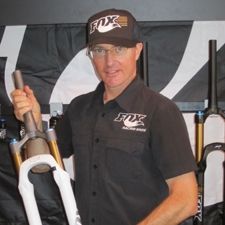DEER VALLEY, UT (BRAIN)—PressCamp ended its three-day run Thursday night with most editors and suppliers leaving Dear Valley for home this morning.
Editors spent Thursday scrambling to squeeze in last-minute appointments and discussing what they consider to be breakthrough products. One of them could be Wahoo Fitness. Eighteen months ago Chip Hawkins wanted one place to retrieve his training data but discovered that tracking his power output wasn’t that easy. And, as an engineer, Hawkins has two traits: he loves to solve problems and the more data he can collect the better.
His solution was to develop a platform using the ubiquitous iPhone that makes data collection so easy even novice enthusiasts could easily adopt it. His company, Wahoo Fitness, essentially created an interface between the iPhone and equipment like CycleOps’ PowerTap and other power meters that uploads data to a variety of websites.
The iPhone could replace a Garmin Edge, for example, or other similar devices cutting the cost to consumers and offering retailers a $149 kit that includes software, a waterproof box for the phone and a stem clamp. The key, however, is a ‘dongle’ that connects to the iPhone, which translates the ANT+ signal sent out by a PowerTap or other power meters, into a language the iPhone can process.
From there it’s a simple upload via free apps to websites like MapMyRide, Training Peaks, Nike+, Garmin Connect and others. “In some ways it’s better than a $650 Garmin. We’ve found that something like half the consumers going to dealers has a $500 iPhone, so why not use that,” Hawkins said. His next step? Developing an Android compatible system based on Bluetooth technology.
But Hawkins isn’t the only entrepreneur at PressCamp. Bob Parlee, an Olympic boat builder, windsurfer designer, aerospace consultant, oyster farmer (no longer) and cycling enthusiast is building a brand that’s gaining traction among dealers—especially his custom carbon fiber bike-build program.
“I was racing bikes, designing windsurfers and small boats and decided to quit,” he recalled. That was in 1998. He spent the next year or two developing a program to build custom carbon fiber bikes. “That’s my comfort area—building things,” he said.
Today, Parlee has 18 employees at his new Beverly, Massachusetts, factory; the company sells a stock line of Asian-made carbon bikes, and offers a custom paint program at its Beverly facility.
The company’s Tom Rodi said they work directly with retailers in providing customs builds, noting that Parlee just built a bike for a 4-foot, 9-inch tall woman. “We have the capacity to do 500 to 1,000 custom frames a year, but it’s a spikey business,” Rodi said. At present, Parlee doesn’t sell complete bikes. Instead it ships a frameset and a build kit spec’d by the dealer directly to the store so the dealer can assemble the bike. It’s a flexible system, he added.
Moving on to another appointment at Fox Racing Shox, Jim Noonan (pictured) is showing off the company’s 2012 Float RLC 140 and the Talas 140/110—both for 29ers featuring 34-millimeter Kashima coated tubes. Also look for the Float Ti with a 6/4 investment cast titanium crown and steerer. Noonan, the company’s marketing manager for the bike division, said aftermarket prices for the Float RLC 140 is $970; the Talas 140/110 is $1,030; and the Float Ti, depending upon the setup will range from $1,240 to $1,310.
Hutchinson is making more than tires these days. Levi Olsen, national sales and marketing manager, said the French company is about to enter the tubeless conversion market with its $30 Convert’Air kit. The kit, he said, should give Stan’s No Tubes a run for its money.
Hutchinson’s kit includes two rubber strips for rim channels ranging from 17 to 24 millimeters. Each strip overlaps the entire inner rim channel spilling over the sides. It also includes to valve stems and a sealant, Protect’Air Max. The sealant will fill four road tires or two mountain bike tires.
Once the tire has been seated on the rim and inflated, the excess rubber flopping over the sides is easily removed. Just a quick snip with a scissors and then it zips off the rim. The rubber seal, trapped between the rim bead and tire bead, further improves the seal, Olsen said. The kits will be available later this year from most major distributors.
(Look for a final product wrap-up on BRAIN’s website Monday).
—Marc Sani
msani@bicycleretailer.com




